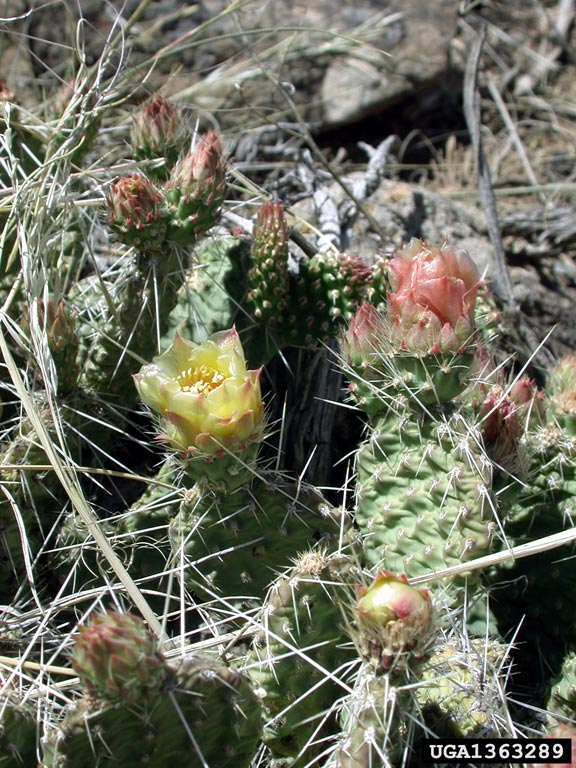Weed of the Month: Pricklypear
 | Author:
Allison Kosto, MSU Broadwater County Extension Agent
MT43 News School Correspondent |
Weed of the Month: Pricklypear
Allison Kosto
MSU Broadwater County Extension Agent
There are only five species of cactus native to Montana. Of these, there are two species of prickly pear, Brittle Prickly Pear and Plains Prickly Pear. Plains Pricklypear is more common in Broadwater County. Although native, prickly pear has some weedy tendencies and can be an increaser. An increaser is a plant whose population increases during a disturbance such as overgrazing.
Description & Habitat
Plains prickly pear can be found throughout much of Montana except for the northwestern corner of the state. It can be found in a wide range of habitats and prefers dry, well-drained soils, gravelly to sandy soils. It is often associated with environments with sagebrush, rabbitbrush, wheatgrass and Idaho fescue.
Prickly pear is a unique plant. It has green-gray waxy oval pads 2 to 6 inches long that are modified stem segments. The spines are modified leaves. It has a shallow root system so that it can easily catch rainfall. It stores excess water in the pads which helps it withstand extended periods of heat and drought. In some environments, the plant can reach 1 to 2 feet tall. However, in Montana, it typically remains close to the ground creating clusters or colonies across the ground. Prickly pear blooms in early summer. The flowers are yellow. The most common method of spreading is through detached pads which root and form new colonies. It can also spread by seed, although this is less common.
Even as a native species, prickly pear can be a pest. It can reduce accessibility and forage availability on rangeland, especially with dense populations. It can also degrade wildlife habitat, reduce plant diversity and decrease land value. The spines of prickly pear can injure livestock in their feet, nose and mouth. It also can be a nuisance for recreation. However, prickly pear is highly valued in some cultures. Prickly pear pads are edible and are common in Native American and Mexican cuisine.
Management
Avoiding disturbance or overgrazing and maintaining a healthy population of native or desired species is often effective to keep prickly pear at a manageable level. Digging or grubbing is effective with small infestations. Cut the main root 2 to 4 inches below the soil with a hoe or shovel. Remove any cacti pads from the site, because if they are still in contact with the soil they can root and grow new plants. Mechanical methods such as harrowing, disking and tillage will destroy top growth. However, the plants can still regrow from the vegetative components, and this can actually increase cactus density.
Herbicides are an option, but they act slowly on cacti. The prickly pear dies very slowly. The plants turn yellow first and then “meltdown.” It will take 6 to 8 months before any visible effects show and then 1 to 3 years for the plant to fully melt down. The most effective products contain picloram such as Tordon or Surmount. However, these products require a pesticide applicators license. If you do not have a license, alternatives are Milestone or Curtail. They may not provide total control but will slow it down. Always read and follow the entire label when applying herbicide. Common chemical names are used for clarity but does not imply endorsement of a product or brand.
For assistance on weed identification and management, contact the MSU Extension Office in Broadwater County at 406-266-9242.
Article Images
Click on Image Thumbnail(s) to view fullsize image
